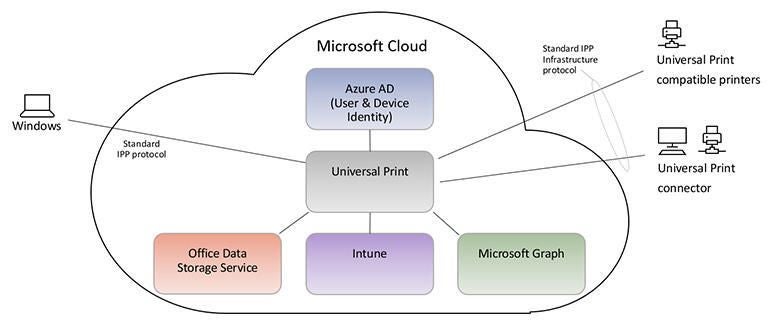The Function of Universal Cloud Storage Services in Calamity Recovery Planning: A Comprehensive Guide
In the realm of disaster recovery preparation, the use of universal cloud storage space solutions has become a vital part for organizations intending to secure their information and make certain business continuity despite unforeseen disturbances. The capability to firmly keep vast amounts of information off-site, obtainable from anywhere at any moment, offers a compelling option to the challenges presented by conventional on-premises storage space systems. As innovation remains to progress and organizations progressively depend on electronic possessions, the duty of global cloud storage space services in catastrophe recuperation preparation can not be overstated. The seamless integration of cloud services right into an extensive disaster recuperation method offers a degree of versatility, scalability, and efficiency that is unmatched, yet it likewise comes up with a host of considerations and complexities that require a thoughtful strategy.
Significance of Cloud Storage in Catastrophe Healing
Cloud storage space plays a crucial duty in catastrophe healing strategies as a result of its ability to safely save and swiftly bring back essential data and applications in times of situation. When companies face unexpected disasters such as cyber-attacks, all-natural tragedies, or system failings, having a dependable cloud storage space service can make all the difference in making certain company connection.
Among the crucial advantages of leveraging cloud storage space for disaster recovery is its scalability. Cloud storage companies supply versatile storage choices that can conveniently suit the differing requirements of organizations, allowing them to scale up or down based upon demands. This scalability makes sure that organizations can effectively handle their information without fretting about running out of storage room throughout vital times.

Advantages of Universal Cloud Solutions
Incorporating universal cloud services into disaster healing planning boosts the effectiveness and durability of business information monitoring techniques. One primary advantage is the scalability provided by cloud solutions, permitting organizations to easily readjust their storage space requires based upon demands. This flexibility guarantees that businesses can promptly adjust to transforming conditions, such as increased information volumes during disaster recuperation scenarios. In addition, universal cloud services offer an economical service for disaster recovery planning by removing the need for costly on-premises infrastructure and maintenance. Organizations can take advantage of the pay-as-you-go model of cloud solutions, paying only for the sources utilized during the healing process. Universal cloud services offer improved availability, allowing staff members to gain access to important data from anywhere, promoting remote work during recovery initiatives. The security features ingrained in cloud services likewise add to the advantages, making certain that data stays safeguarded and encrypted, safeguarding against information loss or violations. Overall, the adoption of global cloud solutions in disaster recovery planning can dramatically bolster a company's preparedness and durability in the face of unanticipated events.
Difficulties in Implementing Cloud Storage
Carrying out universal cloud storage remedies presents organizations with various obstacles that need careful factor to consider and calculated preparation. One of the primary challenges is information safety and security and privacy problems. linkdaddy universal cloud storage. Entrusting delicate details to a third-party cloud provider raises worries concerning unauthorized gain access to, data violations, and conformity with data defense policies. Organizations should thoroughly examine the safety and security steps and protocols applied by the cloud provider to alleviate threats properly.
An additional significant challenge is the potential for downtime and service disturbances. Reliance on cloud storage space implies organizations are prone to connection concerns, server failures, or maintenance disturbances that might affect access to crucial data and applications. Developing a robust continuity strategy, including repetitive backups and failover mechanisms, is important to make certain service procedures can continue effortlessly throughout unanticipated cloud service interruptions.
Furthermore, scalability and cost management position challenges in cloud storage space application. Organizations has to properly anticipate their storage space requires to stay clear of over-provisioning or underutilization, which can result in unneeded expenditures or poor sources. Carrying out efficient monitoring and source allocation techniques is crucial for optimizing cloud storage prices while fitting future growth requirements.
Ideal Practices for Calamity Recuperation Planning
When strategizing for disaster recuperation planning, thorough interest to detail and comprehensive danger evaluation are critical. Among the most effective methods for efficient calamity recovery planning is to establish clear recuperation purposes. These purposes need to detail the preferred recuperation time objectives (RTOs) and healing point purposes (RPOs) for different systems and data collections. universal cloud storage. By clearly specifying these objectives, organizations can prioritize their healing efforts and designate resources properly throughout a calamity.
Another secret technique is to frequently test the catastrophe healing plan to ensure its performance. Carrying out tabletop exercises, simulations, or full-blown drills helps recognize voids in the plan, permits personnel to acquaint themselves with their responsibilities and functions, and confirms the total readiness of the organization to react to a disaster.
Furthermore, keeping off-site backups in a trusted and protected area is essential. Saving back-ups in the cloud provides an added layer of defense against on-premises catastrophes and makes sure that information can be swiftly restored i thought about this in situation of an emergency. Frequently examining and upgrading the disaster recuperation plan to mirror changes in the IT atmosphere, organization operations, or regulative requirements is also vital to guarantee its significance and performance when required.
Key Factors To Consider for Cloud Storage Integration
Utilizing cloud storage space solutions in calamity recovery preparation requires a careful examination of key factors to consider to make certain smooth combination and optimal data security. When incorporating cloud storage space right into catastrophe recuperation plans, it is important to assess the security determines carried out by the cloud service supplier.

Scalability is additionally a considerable aspect to take into consideration. Cloud storage space services ought to have the ability to suit the company's expanding data requirements without endangering efficiency or sustaining too much prices. Examining the scalability options used by cloud companies can assist make certain that the storage service can adapt to evolving business requirements flawlessly. By carefully taking into consideration these key elements, organizations can properly incorporate cloud storage solutions into their catastrophe recuperation plans and boost their general resilience.

Conclusion
Finally, universal cloud storage services play a vital function in disaster recuperation preparation by providing Find Out More many benefits such as ease of access, cost-effectiveness, and scalability. In spite of difficulties in execution, ideal techniques and mindful factors to consider can help companies efficiently integrate cloud storage into their disaster recovery approaches. It is very important for companies to prioritize the fostering of cloud storage space solutions to improve their catastrophe readiness and ensure company connection despite unanticipated occasions.
In the realm of disaster recovery planning, the application of universal cloud storage solutions has emerged as an important element for organizations intending to protect their data and make certain business continuity in the face of unexpected interruptions. As technology continues to progress and organizations progressively count on digital possessions, the function of global cloud storage solutions in catastrophe recuperation planning can not be overemphasized.Using cloud storage services in disaster recovery planning requires a precise examination of crucial considerations to ensure seamless assimilation and ideal data defense. When integrating cloud storage click for info right into catastrophe recuperation plans, it is essential to analyze the safety and security gauges carried out by the cloud service company. By thoroughly taking into consideration these key elements, organizations can properly integrate cloud storage space solutions right into their disaster recovery plans and improve their general durability.